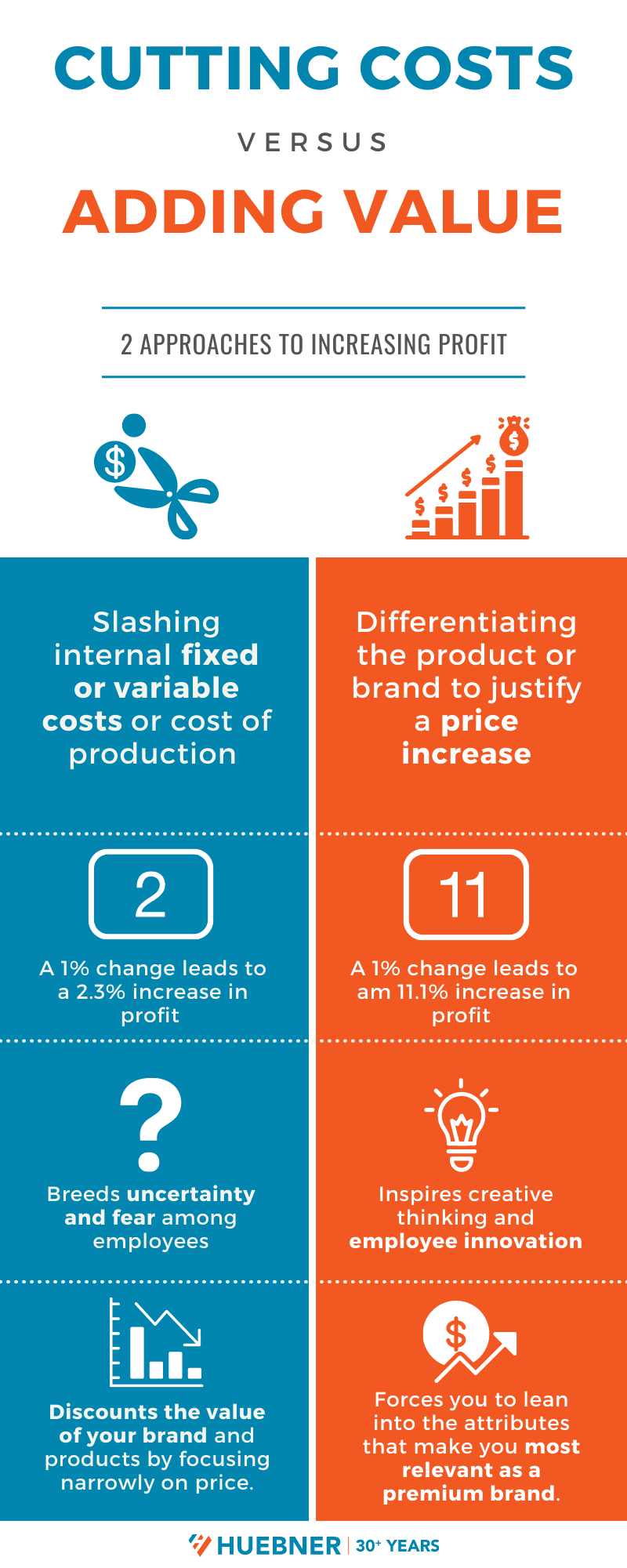There seems to be a common theme in many of our client meetings so far this year.
Cutting Costs vs. Adding Value
I understand and support the mentality behind constantly evaluating where costs can be reduced. I really do. When things are tight around our office, one of the first things I check is whether or not there are any SaaS subscriptions we’re not using. Plain and simple, when you’re trying to improve margins, the default plan of attack is to cut costs.
That said, we’ve had a number of discussions that have led to engaging talks about the benefits of adding value to products over simply cutting costs. One particular meeting was with a client who visited our office. He told us of a strategy they’d been using that has dramatically changed their business. He said a few years ago, “They discontinued the weekly cost-cutting meetings we were having, and turned these meetings into discussions about where we could add value to the product itself or add value to the brand.” These meetings have led them to a product line that is significantly higher priced, differentiated, and valued by their core consumers. And yes, they also see much higher profit margins than their competitors.
Hearing this, I was reminded of a McKinsey study (see graphic at the start of this post) conducted a number of years ago which proved the legitimacy of this strategy.
Basically, the study found that a 1% change, either by decreasing fixed or variable costs, or by increasing revenue, didn’t have nearly the impact on the bottom line as did a price increase of 1%. Specifically, if you could raise your price by one percentage point due to either maximizing the value that already exists or raising the perceived value through strategic marketing, you would realize significantly more profit than by cutting costs or even increasing revenue.
Don’t get me wrong, there will typically need to be some investment in raising perceived value, either through innovations via R&D and/or sheer promotion of the value proposition. However, if your additional “value-add” costs are less than roughly 3.5% of the estimated profit gain, then you’re STILL ahead of any cost-cutting game, and that’s assuming you’re only raising the price by 1%. A larger price increase will allow for even more product value-additions and brand-building opportunities.
That’s probably why another client of ours maintained the following mantra:
We’ll consider anything that improves the value of the product or improves the value of the franchise.
They understood it was this strategy that would separate them from the others and offer heftier bottom lines in the process.
Pricing strategist Ron Baker says,
“The default purpose of marketing is not to increase sales, but to increase profits. And by increasing perceived value, this is exactly what happens.”
So where do you go from here? I’d suggest walking before you run. How? If you find your team holding more discussions about cost-cutting than adding value, then just start by simply balancing those discussions between cost-cutting AND adding value. I guarantee the value discussions will be much more invigorating, and according to McKinsey, they’ll provide a lot more potential for improving the bottom line in the long run.
If it will help, feel free to download our simple cutting costs vs. adding value infographic to guide your thinking and conversations.

